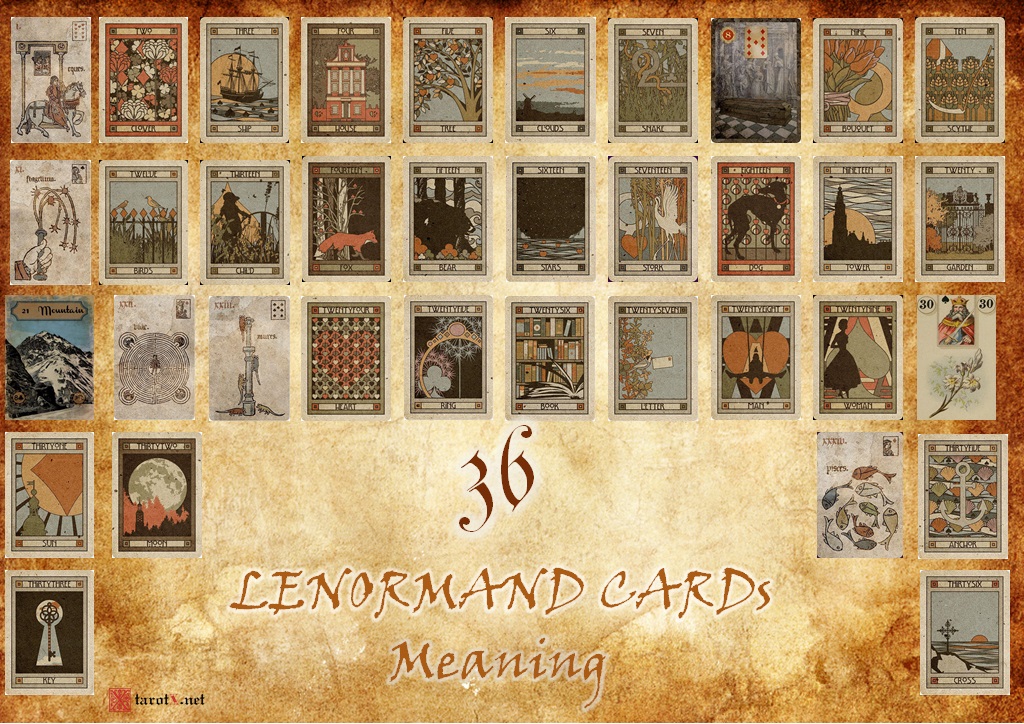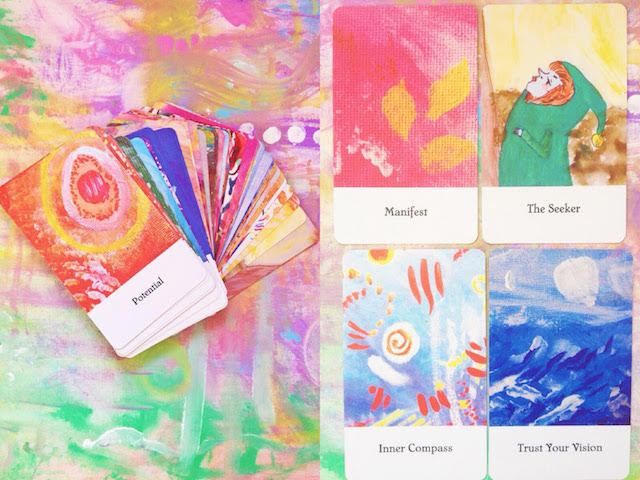
There are a few basic tarot spreads to choose from. There's the Situation-action-outcome tarot spread, the Past-present-future tarot spread, and the Celtic cross tarot spread. They are simple to learn and can be used as a starting point for anyone who is just beginning.
Simple tarot spreads
Tarot Spreads require no prior experience. These spreads are easy to use, but provide surprising amounts of information. They are excellent for general overviews or interrelated issues. The free-form nature of the Tarot Spreads allows for very flexible interpretation. Here are some examples for simple Tarot Spreads.
The situation you are trying to understand is represented by the first card. The second card represents the problem or blockage that must be solved. The third card focuses on the past. The fourth card is about the future. The fifth card reveals the conscious and unconscious thoughts of the individual. The final card is the opposite of the last one, showing the perceptions of the other person.

Situation-action-outcome tarot spread
The Situation, Action, Outcome tarot spread is a three-card tarot spread that looks at possible outcomes of a situation. Although it's not a love reading, this reading is popular for questions about relationships and love. Even though it doesn't give you the complete picture, it will reveal certain aspects you may not have seen otherwise.
This spread of tarot is great for finding more information. It is most commonly used in love tarot readings and uses three cards on the top row and two cards on the bottom row. The spread is drawn by drawing the first card from each row. This represents you. The second represents your partner.
Past-present-future tarot spread
The Past-present/future Tarot Spread is a powerful layout that allows you to connect with the past and future. You can use the spread many different ways according to your personal taste. The spread is made up of three cards, each placed side-by-side. These cards are arranged so that the Four Elements run across them, covering work, relationships, problems, and money.
The Past-Present Future Tarot Spread is one of the most loved three-card spreads. It is especially helpful when you need to know the timing. The first card shows the elements from the past that have an influence on the present. The first card represents the present, and the second represents the likely outcome. For the Past-Present Future Tarot spread, it is important to meditate on the first of the cards in the deck and imagine the question fitting.

Celtic cross tarot spread
The Celtic cross tarot spread is one of the most classic Tarot layouts. It can be used to find out how your life is going, or for more specific questions. This layout can be used in a variety of ways, each with a different meaning.
The Celtic cross is divided in two sections. One section includes the querent while the other section is for those who are blocking. The root of the problem or the unconscious energy that is causing the issue, is the third section.
FAQ
What are some hobbies that seniors might enjoy?
Senior citizens should enjoy engaging in fun activities. Senior citizens should be active and participate in other activities.
They may wish to join clubs, where they can find others who have similar interests. This way, they'll feel less lonely as they age.
Seniors need to keep up with current trends. For example they could keep up to date with fashion, art music, literature, politics, and so forth.
What are collection hobby?
Books, movies music, comics and video games are some of the most popular collections.
Also, you can collect anything: stamps, coin to cars, dolls to action figure to model kit to figurines to art materials to tools to cook utensils and jewelry to watches to jewellery to appliances to clothes to furniture or antiques to...
You get it?
How do I find a hobby to pursue?
At first, it may seem like there is nothing you can do.
You may be thinking, "I'm just not artistic" or "I hate sports," or perhaps "I don’t even know what I know."
The truth is that you likely already have a lot experience in your chosen hobby.
It's just that you haven't realized it yet.
Take a good look at what you have in your house. How many things do you own?
Do you have any old toys lying around?
You might have a collection.
Perhaps you have always wanted to be a chef.
Or maybe you'd really like to start playing guitar again.
Whatever it is, there's likely something you can turn into a hobby.
The key is to see that you already have many experience to draw upon.
And once you do, you'll be able to pick out a hobby that fits right into your lifestyle.
What hobbies are popular right now?
Popularity is not always a positive thing. It can be used to justify mediocrity. Most people don’t have the time to pursue any hobbies they desire. They are always too busy to earn a living. What can you do if your time is limited? You could also start your own business.
But it's not an easy task. You will need to overcome many obstacles before your idea can become a reality.
Consider pursuing a hobby if your goal is to have something more fun than running a company.
Hobbies are not limited to creative pursuits. There are many types of hobbies. Here are some examples:
-
Gardening
-
Cooking
-
Photography
-
Reading
What are your top hobbies?
Your favorite hobbies are ones you enjoy. If you enjoy what you do, it will be much easier to keep going. You will have a reason when you feel sick or tired.
Our hobbies include painting, crafts, photography and cooking.
Volunteering could be a great option.
You might be looking for something more adventurous. Consider scuba diving and skydiving.
If you want to go further afield, there are plenty of unique ways to spend time in nature. You can go cliff diving, cave tubing or snowshoe hiking, snowshoeing or snowkiting.
What are some ideas for hobbies?
Hobby Ideas for People who Love to Learn and Teach Others.
Hobbies are a great way for you to do what you love and also learn something new.
There are many kinds of hobbies. However, all have the same characteristics. These hobbies are often enjoyable and require minimal effort.
These include working with others to teach someone how to use an instrument or build an airplane.
You may not think of yourself as a teacher but there might be something you could do in order to help someone else learn.
You can make a difference in the lives of others by starting a hobby.
How do you get started with your new hobby or interest?
The first step toward starting any new hobby is to decide what kind of activity you'd like to pursue.
Once you've chosen your subject, you need to be passionate about it.
Understanding why you are interested in a hobby is important. It will provide you with direction and purpose.
After you have decided on the type of hobby you want to pursue, it's time to start planning.
You should think about the equipment you'll need.
Consider whether classes or seminars are necessary.
You must ensure you have enough room for your hobby.
A club or group might be something you consider. These groups often offer advice and support.
Finally, think about how much money you would need to spend on your hobby.
Statistics
- The Role of the Mind in Sex, Dating, and Love: Men in the “humor” condition received phone numbers from 42.9% of the female participants and were refused 57.1% of the time. (time.com)
- This 100% accurate personality-analyzing hobby quiz discovers your passion based on your characteristics. (quizexpo.com)
- The intensity of the dialogue partners' bond at the end of the forty-five-minute vulnerability interaction was rated as closer than the closest relationship in the lives of 30 percent of similar students. (time.com)
- 37% Video Games 36% Travel 36% Health and Fitness (quizexpo.com)
- Studies show that just six minutes of reading can reduce stress levels by 60 percent. (oberlo.com)
External Links
How To
How to start gardening
Gardening is one the oldest forms. It takes patience, persistence, determination, and perseverance. The first step to starting a garden is to pick a spot where you will grow food. This could be on a large piece of land or in your backyard. Next, you will need to decide which type of plants are best for you. Are you more fond of flowers or vegetables? Some people are passionate about growing herbs, while others like raising livestock like rabbits. Before you decide on what type of crops to plant you need to take into consideration how much space you have. If you live in a climate that experiences cold winters, then you might decide to grow fruits or berries as they do well in colder climates.
Once you have chosen what you will be planting, you must take some time to prepare your soil. Soil is essential in determining whether your plants will thrive or fail. Good quality soil contains organic matter that helps feed your plants' roots. Organic matter can include leaves, twigs and grass clippings as well as manure and compost. After you have prepared your soil you must add nutrients. Depending on the type of plants you plan to grow, you may need different amounts of nitrogen, phosphorus, potassium, calcium, magnesium, boron, zinc, copper, manganese, iron, molybdenum, chlorine, sulfur, sodium, and so on. An online fertilizer calculator can help you calculate these values. Many fertilizers are available, so make sure you know what you are buying.
Now you need to wait for the seeds to germinate. The process can take between 2 and 3 months depending on how hot or cold it is in your region. Once your seeds have sprouted, you need to water them regularly. You can endanger your plants if you water them too often or too little. Avoid overwatering your plants. Overwatering your plants can lead to root disease and fungal infections. Keep in mind that plants are more thirsty during summer than winter. Keep in mind that certain plants may need to be dried after being watered. Tomatoes, for example, need to be kept moist but not too wet. They don't like to sit in soggy soil. After flowers are finished, plants must go dormant. Plants go dormant when they stop producing new growth and instead store energy for next year's harvest. During dormancy, the plant stops sending signals to its roots telling them to produce food. During this period, plants continue to store energy. However, the plant will die if temperatures drop below freezing or there is insufficient sunlight.
Urban areas can limit your choices for plants. Concrete sidewalks, roads, buildings and parking lots are all common in urban areas. These blocks block sunlight from reaching ground level. Concrete absorbs light and prevents soil below from getting sufficient sun exposure. Because of this lack of sunlight, many plants cannot survive in cities. There are still plants that thrive in urban environments. Many perennials, trees, and shrubs are able to adapt to urban living. Many annuals are also possible to grow indoors in containers. Container gardens allow you to bring fresh greenery into your home year-round regardless of the weather outside.
Now that you have decided where to place your garden, chosen what you will grow, and prepared your soil, you are ready to plant!